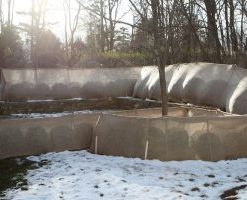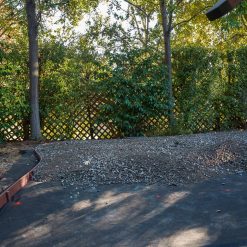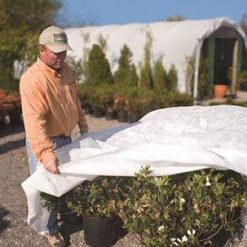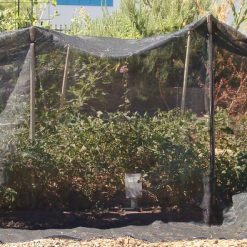What Do We Mean by “Ground Cover”?
Ground cover, in today’s episode, is anything covering the ground for a purpose of function or aesthetic.
Fabric
There are lots of fabric in a typical garden centre. There’s landscape fabric, frost blankets, burlaps, shade cloth, pond liner, etc. For covering the ground, landscape fabric, or weed fabric, can come in various grade. Thicker grades will degrade slower over time.
Pro Tip: Shade cloth can be used in your greenhouse to break up the UV rays on really hot days and provide shade for your greenhouse!
Mulch
Mulch is a great tool to improve water retention, and add aesthetic value. Ideally you only need 2 inches of mulch to be effective. If you put down too little, you won’t get many benefits other than aesthetic. If you put down to much, you could choke out perennials and other plants, less water will reach the soil. Too much trapped water and heat will welcome pathogens.
- Bark Chips – Mostly an aesthetic choice. There’s more spaces for water to penetrate, weed seeds have a higher chance of reaching the soil, and there’s more airflow for pathogens.
- Shredded Mulch – Can be more function and aesthetic choice. It will regulate the temperature of the soil, there’s less space for weeds
Pro Tip: When using mulch around trees, think ‘crater’ not ‘volcano’. By piling mulch like a mound, you inhibit gas exchange and risk moisture around the base of the tree.
Rock
Adding rock serves mostly aesthetic purposes, however can be functional in areas like dog runs. You can use rock to fill areas that don’t get sunlight like between houses. You can use rock to replace unwanted lawn in the front of your home. Rock can come in different colour, sizes, and even textures when you get into lava rock. It won’t fade in the sun, and can look very pretty after a rainstorm.
Pro Tip: Add a layer of landscape fabric under your rock to prevent rock from sinking into the ground below. It’ll be easier to move should you need to in the future.
Straw
This is mostly used in garden beds to help insulate the soil. Straw won’t suck in water as much as mulch will. Plus, it will help reduce the amount of weeds you’ll have to pull!
Pro Tip: Did you know you can actually grow in straw bales? >> LEARN MORE
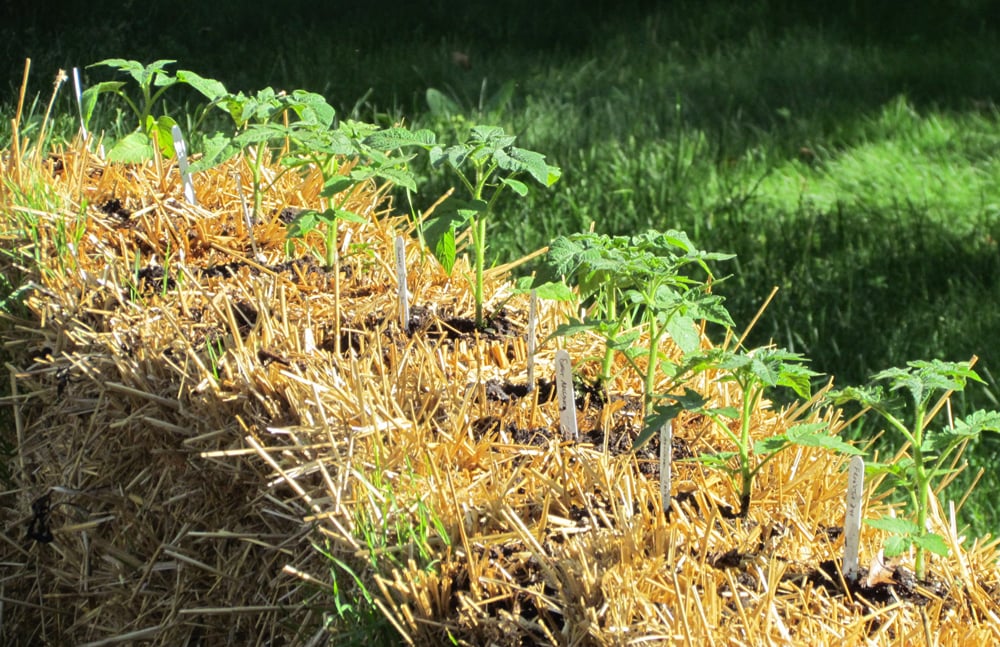
*************************
CONNECT WITH US
Thank you so much for supporting our podcast and for making the world a more planty place. Please subscribe, leave a rating or review and listen in for new gardening discussions every week!
Subscribe to our show on Spotify, Apple, and Google
Leave an anonymous voicemail and be featured on the show!
Instagram / Facebook
Email us info@goldenacre.ca (SUBJECT: PODCAST)



